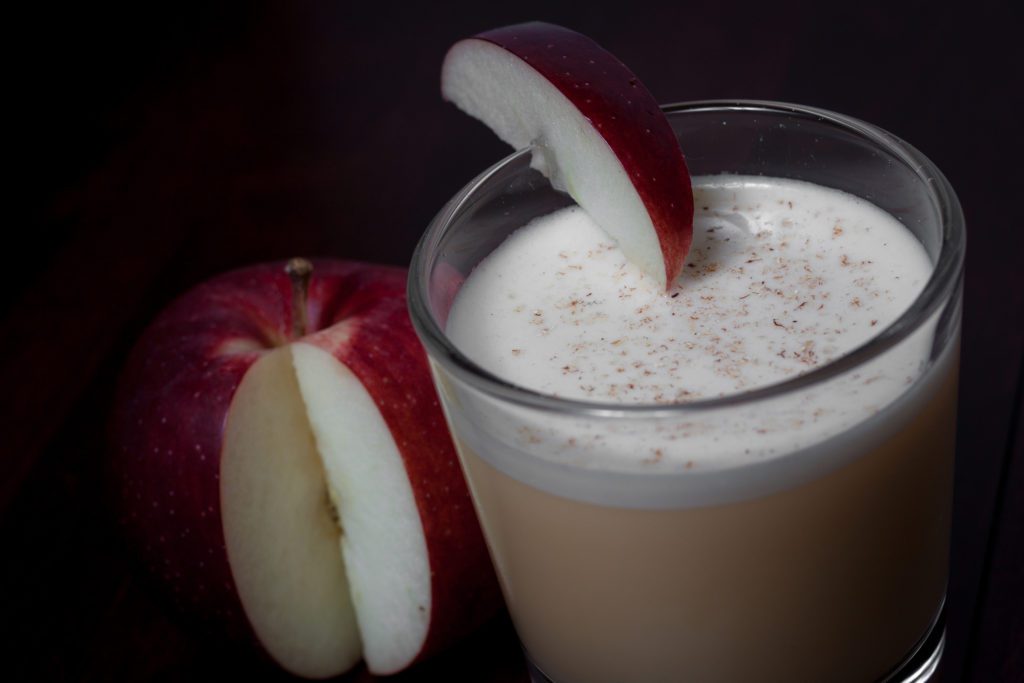Asked to name a fruit that reminds them of fall, most folks would think of apples. From September’s harvest to Halloween bobbing and the all-American apple pie at Thanksgiving dinner, the pomaceous apple plays a starring role in autumn festivities.
’Tis also the season for cider, the unfiltered juice of the apple, whether hard (fermented) or soft (unfermented). Both are building blocks for cocktails that can help counter the chill that sneaks in this time of year.
The history of cider begins in the days of Julius Caesar. While evidence exists that apples were grown along the Nile River delta as early as 1300 B.C., it is uncertain when they began to be used to make cider. The earliest documentation of cider comes from the Romans, who
discovered villagers drinking a cider-like beverage when they invaded England in 55 B.C.
On our shores, cider dates back to the earliest days of colonization. In fact, without cider, we might not have the holiday we know as Thanksgiving.
When the Pilgrims set sail on their voyage to the New World, they brought with them apple seeds and cider-making supplies. As a story on the website of hard-cider company Angry Orchard recounts, three days after setting off from Plymouth, England, the Mayflower hit a storm that cracked a beam of the ship. The group almost turned back, but a “great screw” was found to hold up the beam. It is said that this device was actually part of a cider press.
Cider’s role in America’s history continued from there. George Washington and Thomas Jefferson owned apple orchards and produced hard cider. As the nation expanded, it took cider with it. Consumption of cider increased steadily during the late 18th and 19th centuries, due in part to the efforts of the legendary Johnny Appleseed (John Chapman), who planted numerous apple trees in the Midwest.
Soft cider continued to be appreciated — and hot spiced cider, spiked or not,
remained a timeless warmer — but in the late 19th and early 20th centuries hard cider fell by the wayside. The growing numbers of German and Eastern European immigrants added to
the popularity of beer, which had a faster fermentation process. Then the scourge of Prohibition made hard cider almost obsolete.
Pre- and post-Prohibition, soft cider was used as a mixer in cocktails. One classic tipple, dating to the early 1900s, is the Stone Fence: areviving mixture of brandy, cider and Angostura bitters. Hard cider, however, didn’t start its comeback until the 1990s, riding the coattails of the microbrew revolution. These days, varieties and craft versions abound.
It being fall, the web is flooded with recipes for cider cocktails. Depending on your tolerance level, it’s up to you to decide whether to mix these using hard cider or soft.
If you prefer the bar scene, Georgetown’s venerable 1789 serves up a warm brown buttered rum-and-cider cocktail. Zagat recommends Oyamel’s Manzana Mexicana, forged from tequila and cider made from local apples. Legal Sea Foods has created an apple sangria, crafted from apple vodka, Domaine de Canton ginger liqueur, plum wine, cinnamon and sparkling apple cider.
Traditional hot spiced cider is a breeze to prepare. Heat a jug of cider with cloves and cinnamon sticks until the flavors meld. Add brandy or apple brandy and
serve warm. If you’re more adventurous, try bourbon or rum.
Personally, I prefer my cider mixed with an aged rum. Often considered a summer spirit, I like the way its full flavor mingles with autumn spices. I found a great cider cocktail recipe on the online retro-cocktail mecca Mr. Booze. This stylish website features a variety of fall tipples, but this one is an original creation by founder Jerry LeNoir.
Cider House Cocktail
From Mr-Booze.com
2 oz. aged rum
1 oz. applejack or apple brandy
3/4 oz. fresh lime juice
1 1/2 oz. apple or ginger syrup
1 1/2 oz. apple cider
Shake ingredients in a cocktail shaker until ice cold. Serve over ice in an Old Fashioned glass. Dust with a little nutmeg and garnish with an apple wedge.
Photo by
Tim Sackton.


